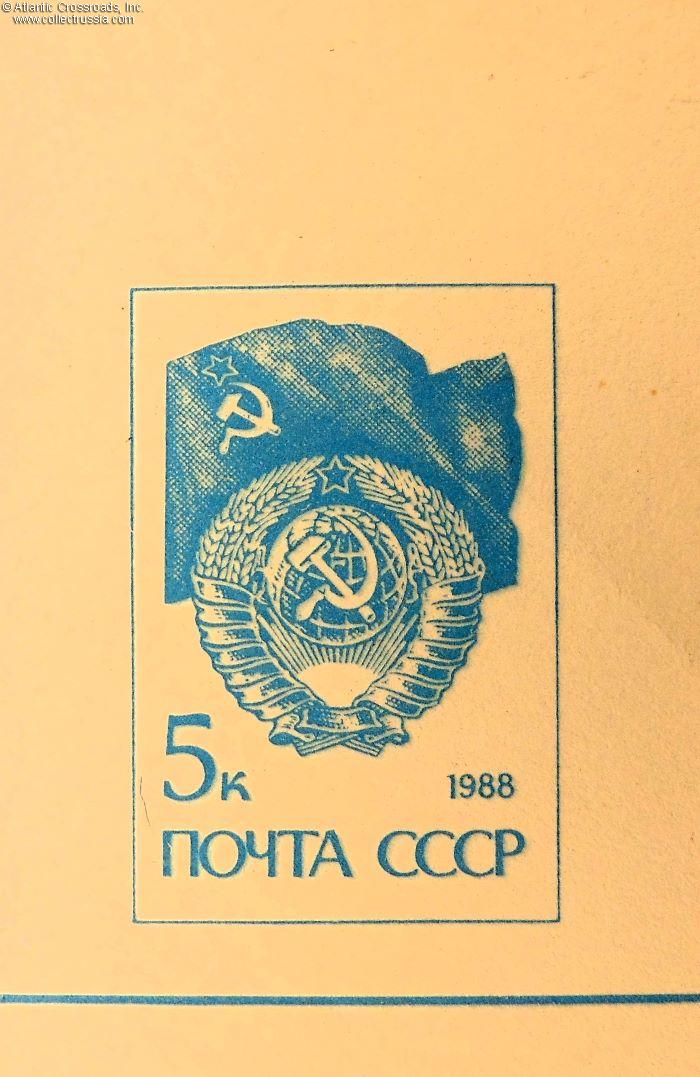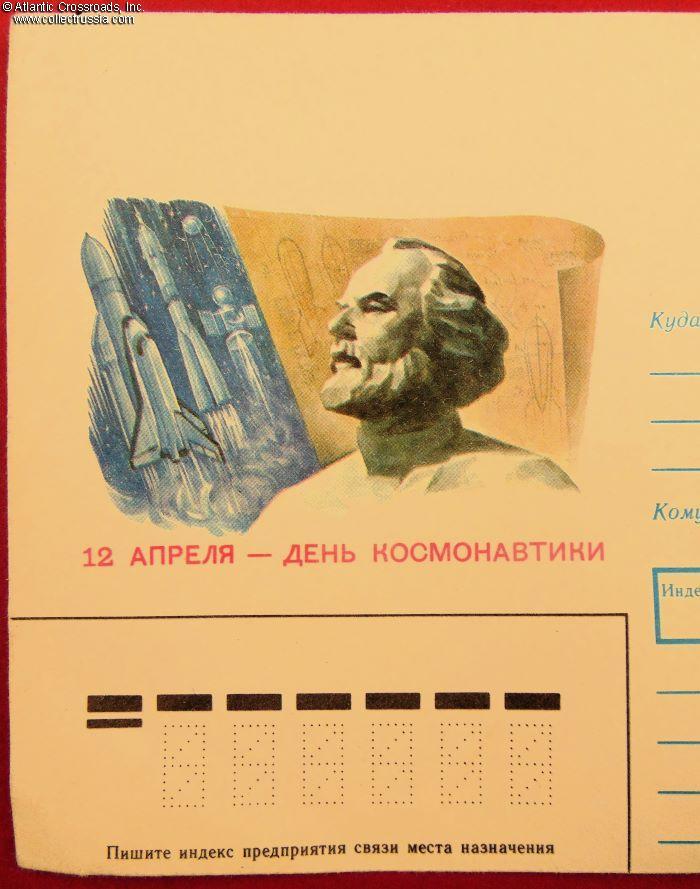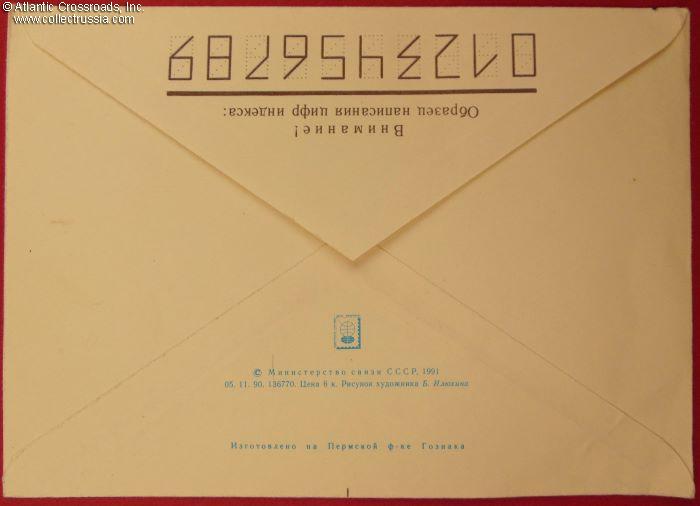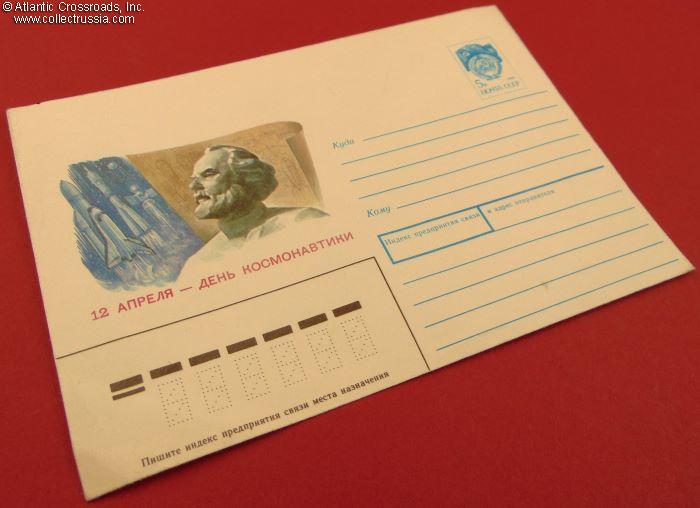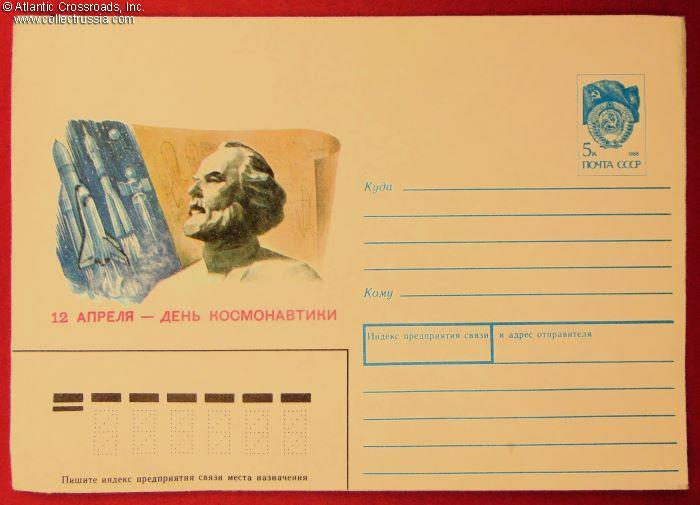
Late Soviet-Era Government Postal Cover, 5 November 1990.
This is the most commonly used standard format of Soviet-manufactured postal envelopes. Measures 6.5 x 4.5", baronial / announcement type with a V-shaped flap and deep throat on the envelope. Issued by the USSR Ministry of Communications, printed by the Perm Mint printing factory. Government marked, postally unused. The obverse features the standard design with the address part on the right and the decorative part on the left, typically a picture and a few words familiarizing the Soviet citizenry with an artist, poet, writer, museum, event, etc., etc. The graphic on this envelope commem
This is the most commonly used standard format of Soviet-manufactured postal envelopes. Measures 6.5 x 4.5", baronial / announcement type with a V-shaped flap and deep throat on the envelope. Issued by the USSR Ministry of Communications, printed by the Perm Mint printing factory. Government marked, postally unused. The obverse features the standard design with the address part on the right and the decorative part on the left, typically a picture and a few words familiarizing the Soviet citizenry with an artist, poet, writer, museum, event, etc., etc. The graphic on this envelope commemorates the Cosmonautics Day which was celebrated in the Soviet Union on 12 April. The artist's name, B. Ilyukhin, is printed on the bottom flap on the verso. The bust in the graphic is Konstantin Tsiolkovskiy, a Russian-born school teacher and mathematician who is often referred to as the father of astronautics and human spaceflight. He was a dreamer who idealized mankind's expansion into space as an engine of moral improvement of man. But he also was the first to come up with the dynamic formula determining propellant expenditure to reach a particular orbit or to change the orbit.
The bottom part of the left side is designed for entering the addressee's postal code. In the Soviet Union it consisted of 6 digits. The Soviet-era postal code scanners were not sophisticated enough to read handwriting. That is why the flap on the back always carried the samples of how to properly write the digits of the code.
The format of the address side reflects socialist ideology of putting the state before the individual, exiling the name of the addressee to the very end of the address space.
The envelope is in excellent condition. Printed on typically thin mid-grade-quality paper, it has acquired minimal storage wear, and negligibly small corner bumps. The wear is not very noticeable and not detractive.
$25.00 Add to cart

